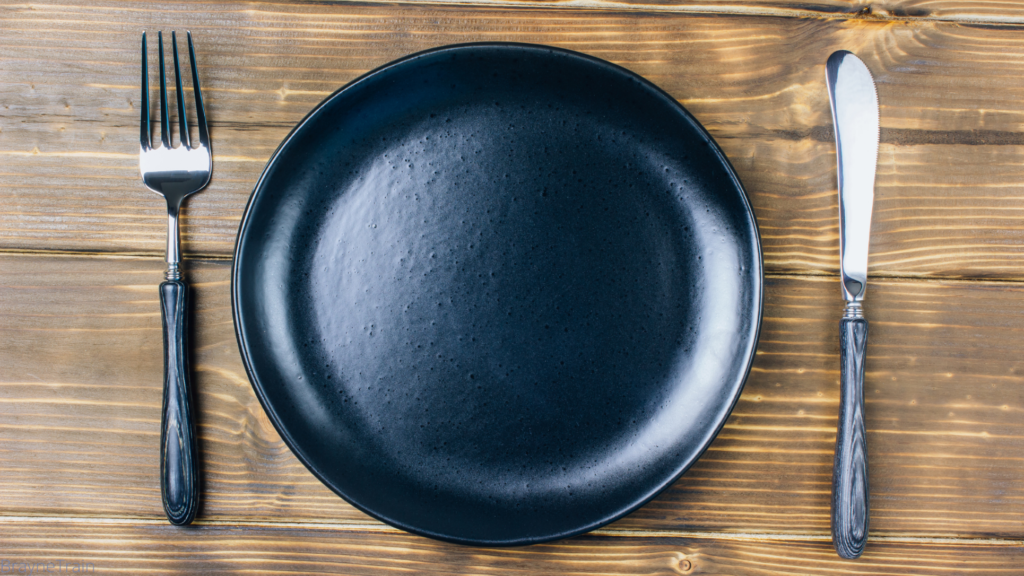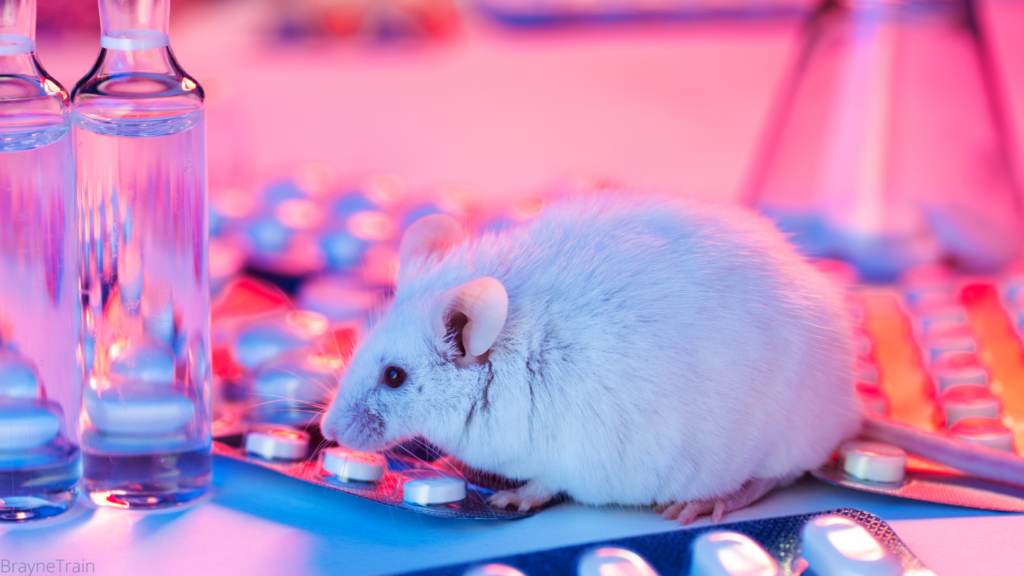
Fasting Mimicking Diet vs. Intermittent Fasting; Which One is Better?
There’s a lot of talk about The Fasting-Mimicking diet these days.
But what’s the difference between intermittent fasting and the Fasting-Mimicking Diet? And which one is right for you?
Here’s a breakdown of the benefits and downsides of each, so you can decide which one fits your lifestyle better.
Let’s take a closer look!
What is The Fasting Mimicking Diet?
The fasting-mimicking diet was created by Dr. Valter Longo, a biogerontologist at the University of Southern California.
The idea behind it is that by following this diet, you can get many of the fasting benefits without putting your body through the stress of an actual fast.
The fasting-mimicking diet consists of eating a low-calorie diet (about 800 calories) from a meal pack you have to purchase.

How Do you Practice the Fasting Mimicking Diet?
- Purchase the Fasting Mimicking Diet Meal Pack. (249$)
- Eat only the meals provided in the Meal Pack for five consecutive days.
- When finished, go back to your regular eating routine.
- Repeat this process once per month for 3 months.
That’s it.
The Meal Pack’s macros include 9% protein, 44% fat, and 47% carbohydrates.
The Meal Pack is designed to help mimic the physiological changes your body goes through during an actual fast.
The fasting-mimicking diet is a low protein diet.
The Fasting-Mimicking Diet Meal Pack.
- Soups
- Including vegetable soup, Minestrone soup, Quinoa soup, Mushroom Soup, and Tomato soup.
- Snacks
- L-Bars, Kale Crackers, and Olives (with Herbs or Sea Salt)
- Drinks
- Herbal Tea: Hibiscus, Spearmint, spearmint, and Lemon flavors.
- Other Flavored drinks.
- Supplements
- Algal Oil.
- Vegetable Powder with vitamins & minerals
Benefits of The Fasting-Mimicking Diet.
The fasting-mimicking diet puts you in a calorie deficiency which can help you lose weight.
- Ketosis
The fasting-mimicking diet’s low-calorie and low carbohydrate nature can put your body into ketosis.
In the state of ketosis, your body burns fat instead of sugar.
Ketosis promotes fat loss and autophagy and lowers insulin levels. Many other health benefits come from being in ketosis.
- You Don’t Have to Starve.
When following a fasting-mimicking diet, you don’t have to fast and starve your body of food.
Instead, you consume a low-calorie diet that can mimic the physiological effects that fasting can have on the body.
- It’s Quick!
The fasting-mimicking diet is easy to follow because the diet only lasts five days. After that, you can go back to your normal eating routine.
The Downside of The Fasting Mimicking Diet:
- Too Expensive.
To follow this diet, you will have to purchase the 5-day fasting-mimicking Meal Pack for 249$.
It is recommended to repeat this diet once per month for three months.
Every time you want to practice the fasting-mimicking diet, you must purchase the meal pack.
So the price can add up.
- Synthetic Ingredients.
The Meal Pack items include many processed and artificial ingredients.
The supplements are almost all synthetic.
- Includes Sugar & Honey.
The Fasting Mimicking Meal Pack includes ingredients such as sugar, honey,
rice flour, brown rice sugar, grape juice, potato flakes, etc.
Having sugar and honey defeats the purpose of fasting because sugar stimulates insulin, and insulin spikes will break your fast.
- No Proper Preparation for The Fast.
When you start this diet, you do not prepare your body. Suddenly, putting yourself in a calorie deficiency state can shock the body and cause too much stress on your digestive system.
- Low Protein.
The nature of the Fasting Mimicking diet is low protein and high fat, but protein is an essential factor in overall health.
Although low protein helps put your body in a calorie deficit and may help you lose weight, it is also not the healthiest way.

Research Done on The Fasting-Mimicking Diet.
A study published in The Journal Nature Metabolism indicated that the fasting-mimicking diet might have additional health benefits.
Two groups of mice were placed on a high-fat, high carbohydrate diet, which is essentially an unhealthy diet.
One group was placed on a fasting-mimicking diet every four weeks.
Mice placed on the fasting-mimicking diet showed several improvements in their health compared to the control group and the none fasting-mimicking group. These improvements included:
- Better bounce back after the bad diet
- Better gene expression (better mitochondria function.)
- Better neuron regeneration.
- Less weight gain.
- Lower visceral fat.
- More body resilience.
However, more studies need to be done on human subjects before any health benefits can be confirmed.

What is Intermittent Fasting?
The actual practice of fasting is when you abstain from eating any food for a certain period of time.
There are different kinds of fasting, such as water fast, dry fast, prolonged fast, Monk Fast, etc.
Intermittent fasting is the practice of fasting for a certain number of hours and eating during a specific eating window.
For example, during the 16:8 intermittent fasting method, you fast for 16 hours and eat your meals during an 8-hour window daily.
Another example is OMAD or “One Meal A Day” intermittent fasting method. When practicing OMAD, you fast for 23 hours and eat only one meal per day during the one-hour eating window.
Benefits of Intermittent Fasting
Studies have indicated that intermittent fasting helps burn fat by pushing your body into ketosis and reducing the number of calories you eat during the day.
- Easy to Practice.
Although it may be hard to start fasting and it requires self-discipline, intermittent fasting becomes easy to follow over time.
Intermittent fasting can be done anywhere at any time.
- It’s Free!
Intermittent fasting is free. There is no need to buy any special ingredients to practice Intermittent Fasting.
Although following a healthy diet is recommended to achieve the best possible result.
- Helps You Save money
When You practice Intermittent Fasting, you will save money.
By eating fewer meals during the day, you will have to make fewer trips to the grocery store.
That means more money in your pockets!
- Improves Insulin Sensitivity
Insulin is a hormone produced by the pancreas. Insulin helps take sugar out of the blood system and use it for energy.
In the state of insulin resistance, the body does not respond normally to insulin, leading to high blood glucose.
Intermittent fasting helps lower insulin levels. Over time, it can help improve insulin sensitivity, leading to stabilized blood sugar levels and overall health.
- Promotes Self Discipline
Having to abstain from eating food voluntarily for long periods of time requires self-control.
Intermittent fasting can help strengthen self-control and promote self-discipline in all aspects of life.
Other Benefits of Intermittent Fasting Includes:
- lowers Blood Pressure
- Improves Diabetes
- Gets Rid of Food addiction
- Reduced Cravings
- Reduced Hunger
- Improves Cognitive Function
- Better Mood
- Better Memory
- Increased Agility
The Downside of Intermittent Fasting
- Requires Self-Discipline.
Practicing intermittent fasting requires discipline.
To start this fasting regimen, you need to have self-control and discipline, especially in the beginning.
However, fasting becomes easier to follow over time since your body becomes adjusted to fasting, and your self-discipline strengthens.
So Which One is Better?
Both fasting-mimicking diet and Intermittent Fasting provide health benefits such as weight loss and ketosis.
The benefits of intermittent fasting appear to outweigh the benefits of the fasting-mimicking diet.
The fasting-mimicking diet is not an actual fast. Therefore, it does not provide the same benefits intermittent fasting does.
In addition, the Fasting Mimicking Diet Meal Pack includes synthetic ingredients and sugar, which essentially defeats the primary purpose behind fasting; no insulin spikes.
However, for those individuals who find fasting too difficult but would like to get some of its benefits, the fasting-mimicking diet is a viable alternative.
Takeaway
Although the fasting-mimicking diet is not technically a fast, it does have some benefits that can be helpful for people looking to improve their health. Let us know if you’ve tried the Fasting-Mimicking diet and your experience. We’d love to hear from you!
References
Rangan P, Choi I, Wei M, Navarrete G, Guen E, Brandhorst S, Enyati N, Pasia G, Maesincee D, Ocon V, Abdulridha M, Longo VD. Fasting-Mimicking Diet Modulates Microbiota and Promotes Intestinal Regeneration to Reduce Inflammatory Bowel Disease Pathology. Cell Rep. 2019 Mar 5;26(10):2704-2719.e6. doi: 10.1016/j.celrep.2019.02.019. PMID: 30840892; PMCID: PMC6528490.
Stockman MC, Thomas D, Burke J, Apovian CM. Intermittent Fasting: Is the Wait Worth the Weight? Curr Obes Rep. 2018 Jun;7(2):172-185. doi: 10.1007/s13679-018-0308-9. PMID: 29700718; PMCID: PMC5959807.
Vasim I, Majeed CN, DeBoer MD. Intermittent Fasting and Metabolic Health. Nutrients. 2022 Jan 31;14(3):631. doi: 10.3390/nu14030631. PMID: 35276989; PMCID: PMC8839325.
Jane L, Atkinson G, Jaime V, Hamilton S, Waller G, Harrison S. Intermittent fasting interventions for the treatment of overweight and obesity in adults aged 18 years and over: a systematic review protocol. JBI Database System Rev Implement Rep. 2015 Oct;13(10):60-8. doi: 10.11124/jbisrir-2015-2363. PMID: 26571283.





One Comment
Pingback: